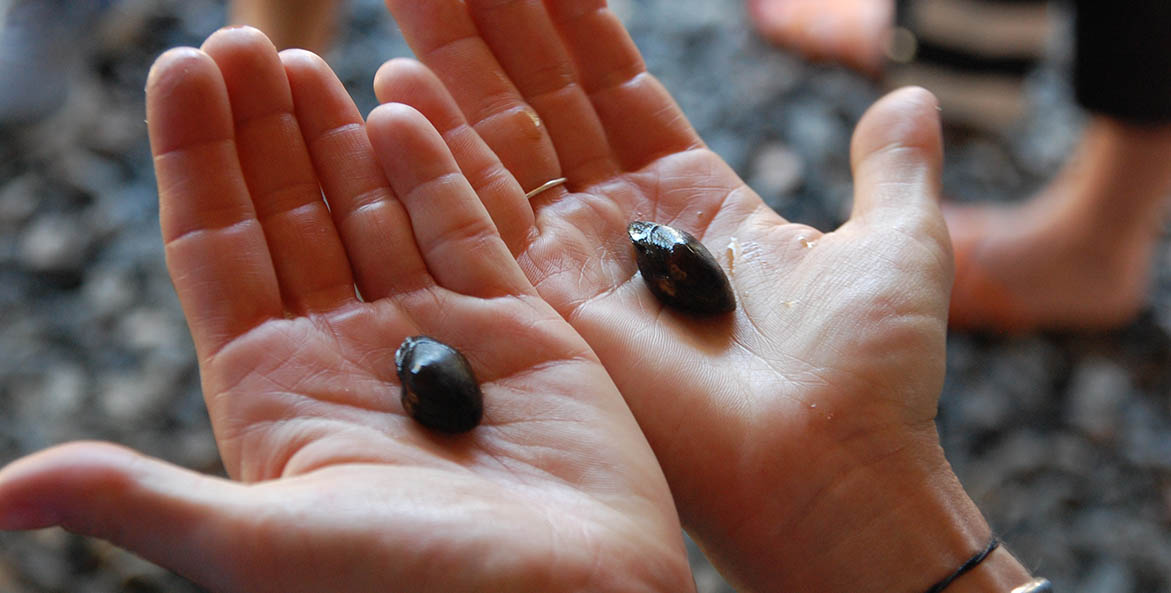In the rivers and streams of the Chesapeake Bay watershed, dozens of species of freshwater mussels do wild and wonderful things that remain hidden to almost everyone. But as their populations plummet, we're losing species before we even fully understand their many benefits.
"Freshwater mussels are just amazing. They load streams and rivers with biodiversity far upstream from the Bay. But very few people understand that they even exist, much less their imperiled state," said CBF Senior Scientist Joe Wood.
Wood is the lead author of a new report by a workgroup of experts under the U.S. Environmental Protection Agency's (EPA) Chesapeake Bay Program that lays the groundwork for expanding mussel restoration in the Bay watershed.
Like oysters, freshwater mussels are filter feeders, cleaning rivers and streams that aren't salty enough for oysters. A single mussel can filter up to 15 gallons of water a day and remove nitrogen that would otherwise contribute to algal blooms and dead zones downstream. Beds of mussels create underwater habitat for invertebrates that form the base of the food chain.
Yet mussels are the most threatened class of organisms in the United States. More than half of all mussel species face extinction, killed off by pollution, climate change, loss of habitat, and viruses. The report estimates that we've lost 90 percent of mussels in the Bay watershed.

Rainbow mussels at the Harrison Lake Hatchery in Charles City, VA.
Kenny Fletcher/CBF Staff
This is even more alarming when you learn about their amazing hidden talents. A list of the roughly 25 species of mussel in the Bay watershed contains some pretty odd names. There's the Carolina Slabshell, the Green Floater, the Creek Heelsplitter, the Atlantic Pigtoe, the Tidewater Mucket, the Creeper, the Paper Pondshell, the Variable Spike, and more.
These names evoke their unique qualities. Unlike oysters that are stuck in one spot, mussels creep along riverbeds. Some mussels are believed to generate gases inside their shells that help them float to new locations.
Even more surprising, to reproduce many mussels attract fish by sending a silvery lure with eye spots out from between their shells. The lifelike lure wiggles enticingly, looking just like a minnow. When fish attack, the mussel releases a flurry of larvae that attach to the fish's gills. The startled fish then transports these baby mussels to new waters.
Despite their complex life cycle, facilities like Harrison Lake National Fish Hatchery in Virginia are making great strides in raising mussels for release into the wild. But funding remains unreliable. Dedicated investments in surveying, protecting, and restoring mussel populations across the Bay watershed would be a real game changer. Creating a mussel restoration plan for the region is an important next step.
Given the dedication of many groups across the watershed working on mussel restoration, it's possible we can turn things around for our streams' most endangered heroes.
"There's a growing enthusiasm for protecting and restoring freshwater mussel populations in the Bay watershed," said Wood. "But to bring back mussels we need commitment, leadership, and investment."
Speak Up for Freshwater Mussels!
Sign Our Pledge



